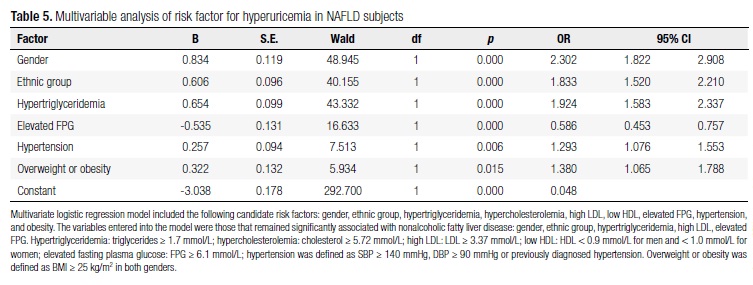OBJECTIVE: The aim of this study was to compare serum uric acid values in two ethnically distinct Chinese populations: Uyghur, with a high prevalence of nonalcoholic fatty liver disease, and Han, with a lower prevalence. SUBJECTS AND METHODS: Serum uric acid and several clinical features and laboratory tests relevant to the metabolic syndrome were measured in 4,157 Uyghur and 6,448 Han subjects in a health examination program. The diagnosis of hepatic steatosis was established by abdominal ultrasound examination. RESULTS: The prevalence of nonalcoholic fatty liver disease was 42.3% and 33.3% among Uyghur and Han subjects, respectively. The corresponding prevalence of hyperuricemia was 8.8% and 14.7%. The mean concentration of serum uric acid in Uyghurs also was lower than in Hans (282.75 vs. 310.79 µmol/L; p < 0.01). However, in both populations, the prevalence of nonalcoholic fatty liver disease was increased in association with increasing serum uric acid concentrations, a trend that was more pronounced in Uyghur than in Han subjects (OR 3.279 and 3.230, respectively). Several components of the metabolic syndrome were more pronounced in Uyghurs than in Hans. CONCLUSIONS: Serum uric acid is an independent risk factor in nonalcoholic fatty liver disease in both Uyghurs and Hans, but other risk factors may be more important in the differences in prevalence of the disease between the two ethnic groups.
Non-alcoholic fatty liver disease; serum uric acid; Uyghur; Han; hyperuricemia





